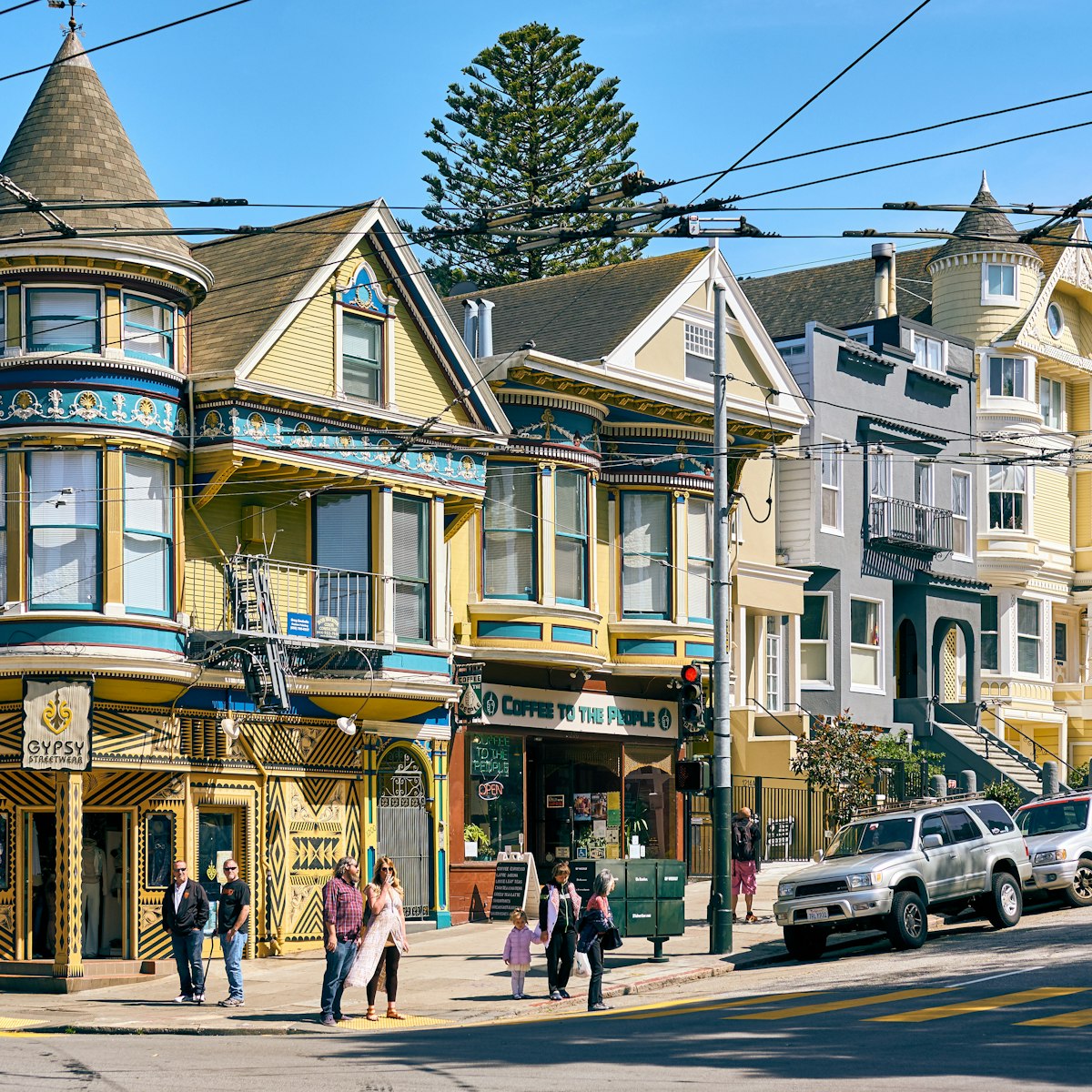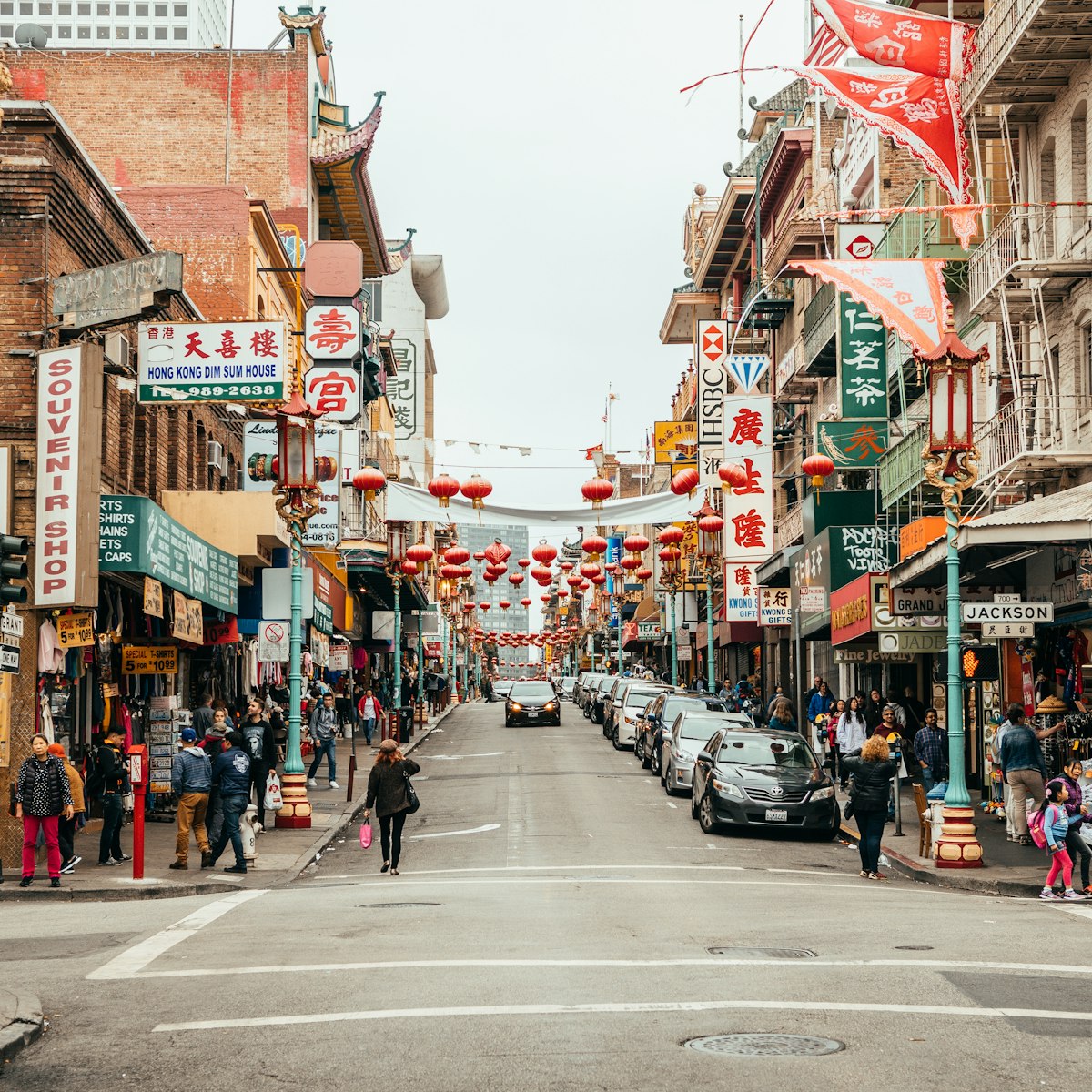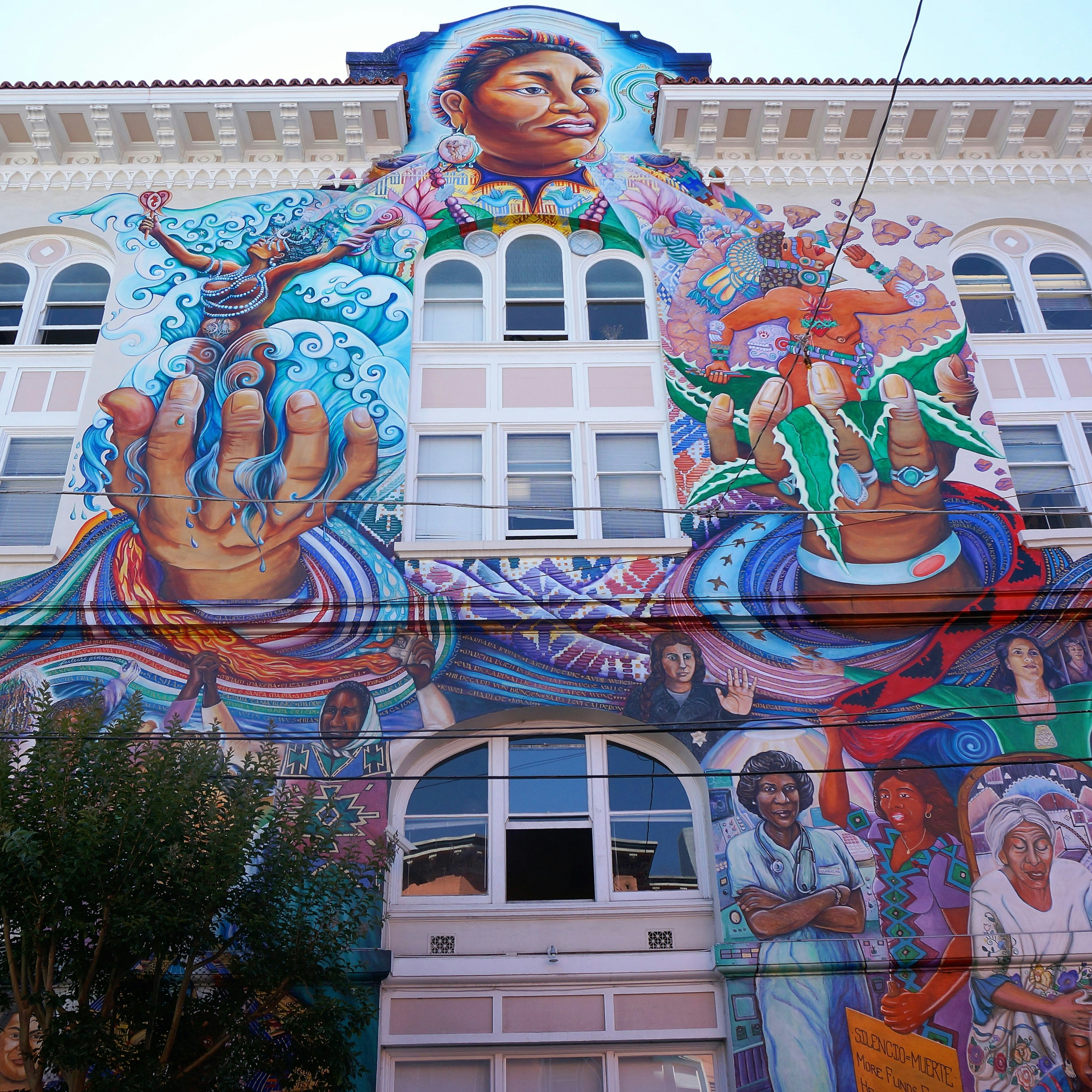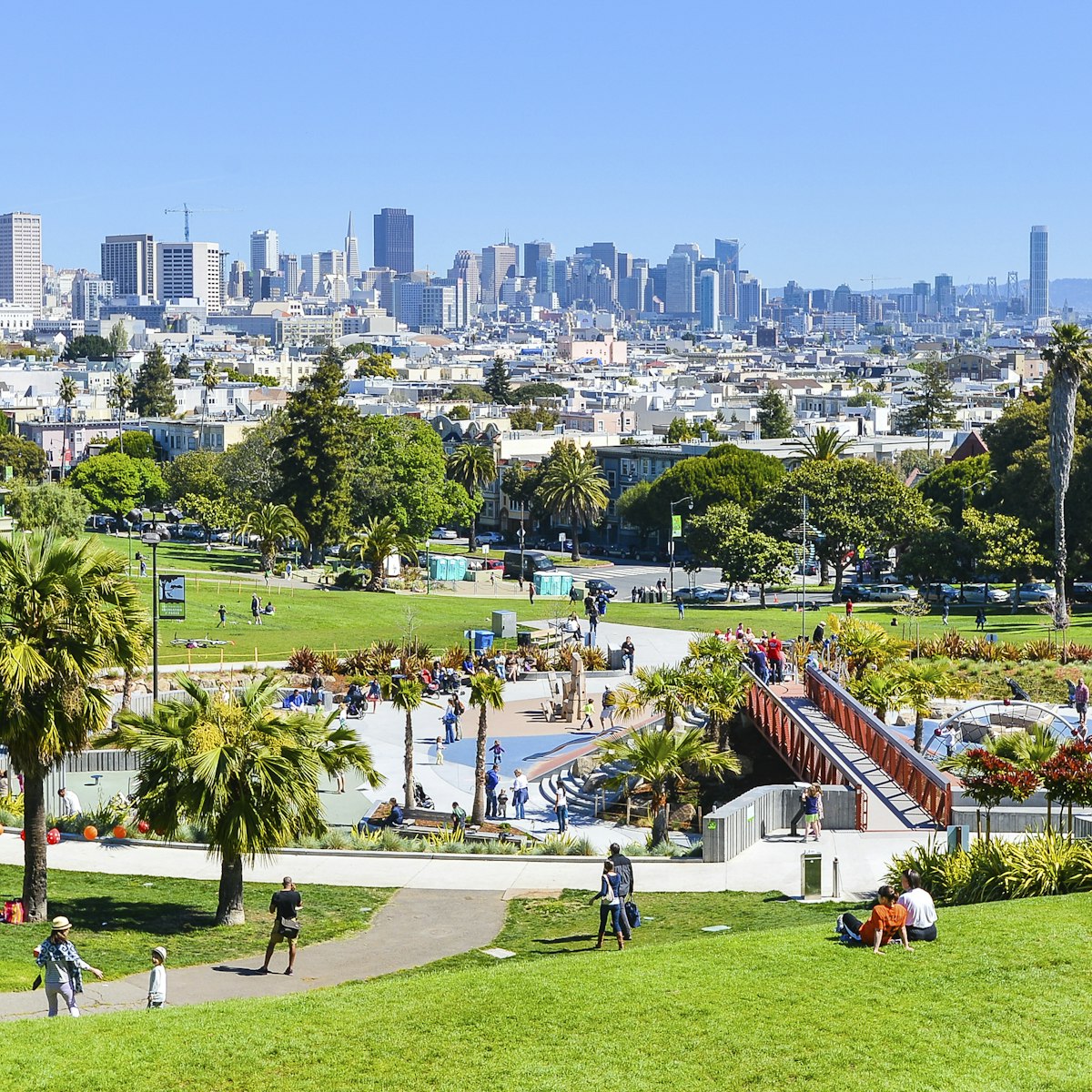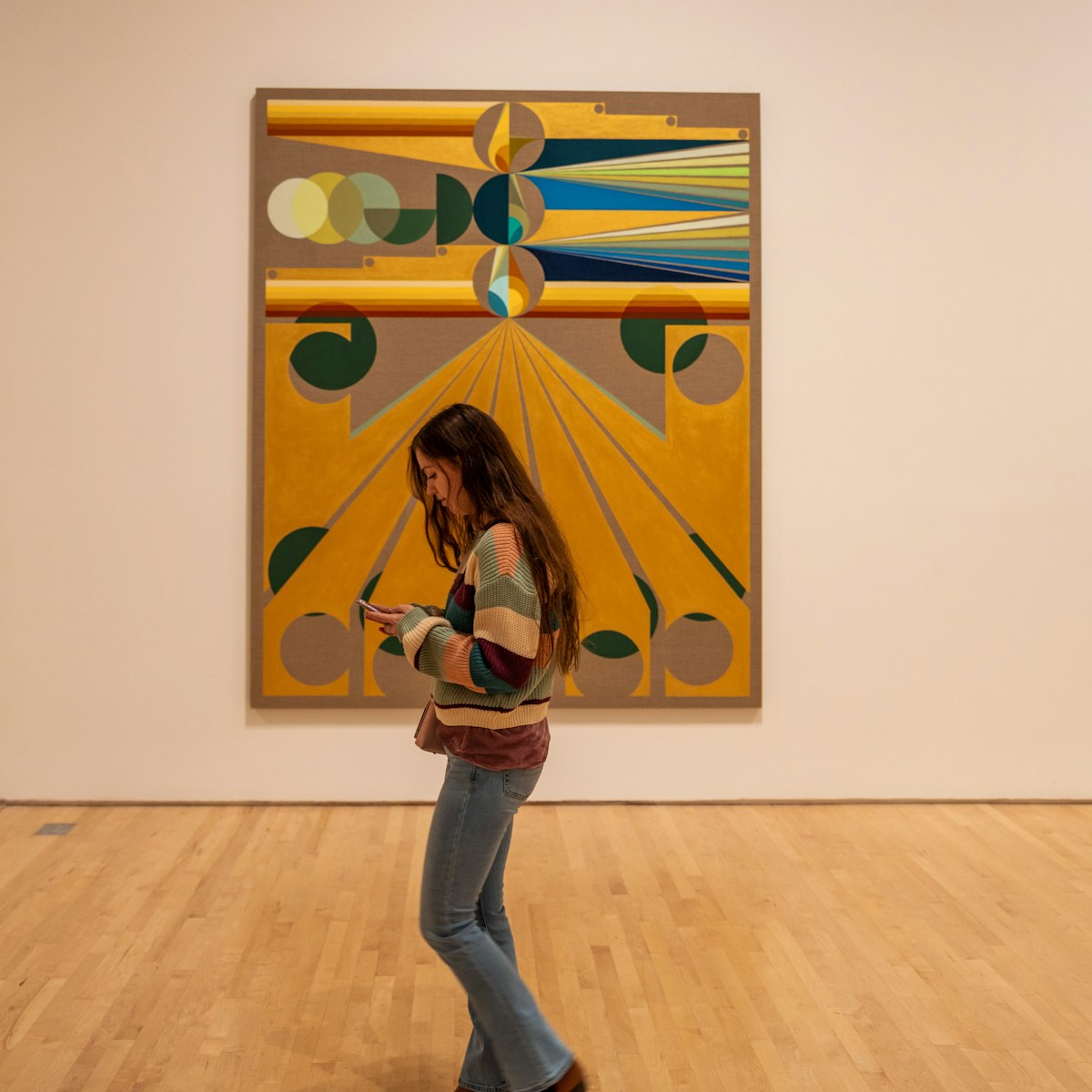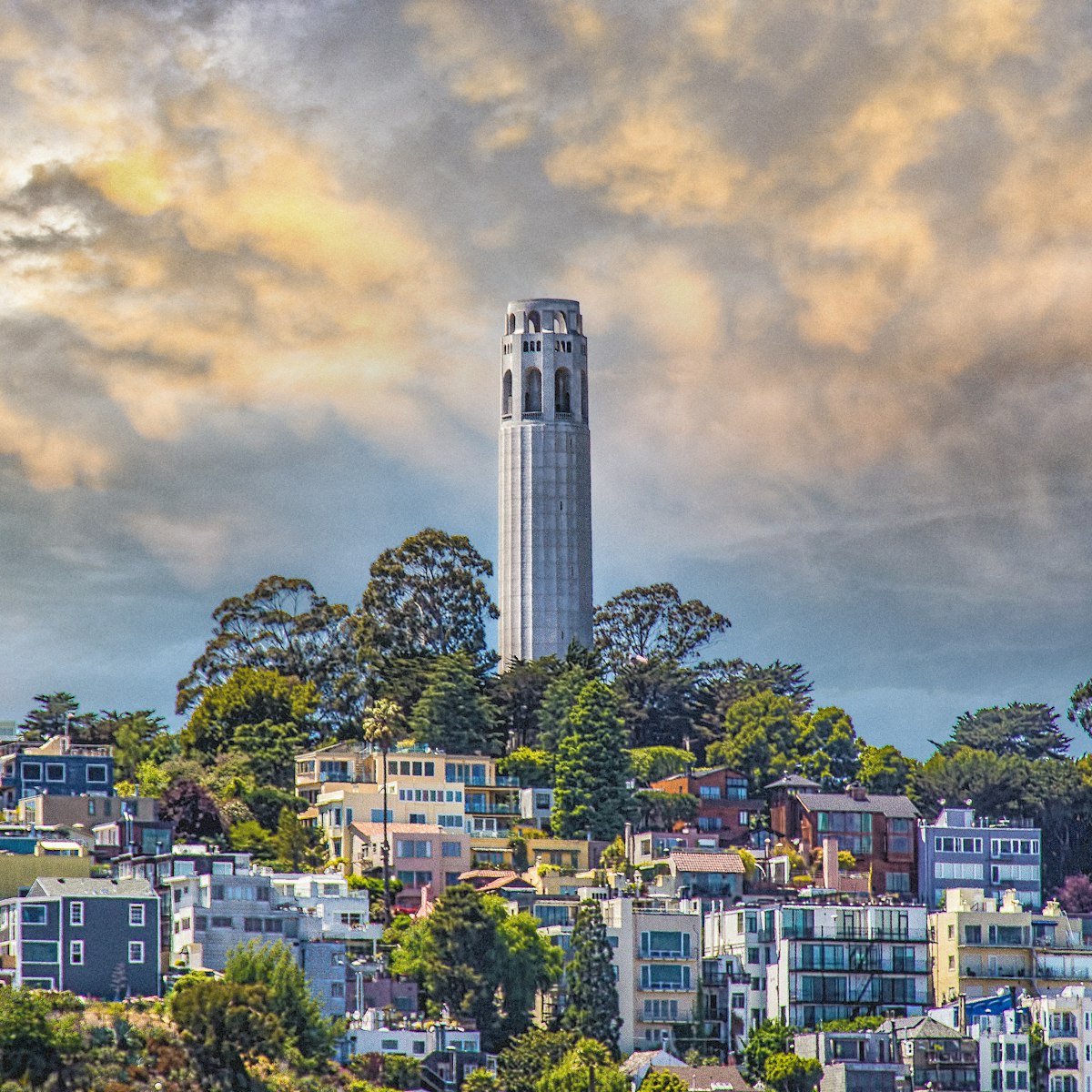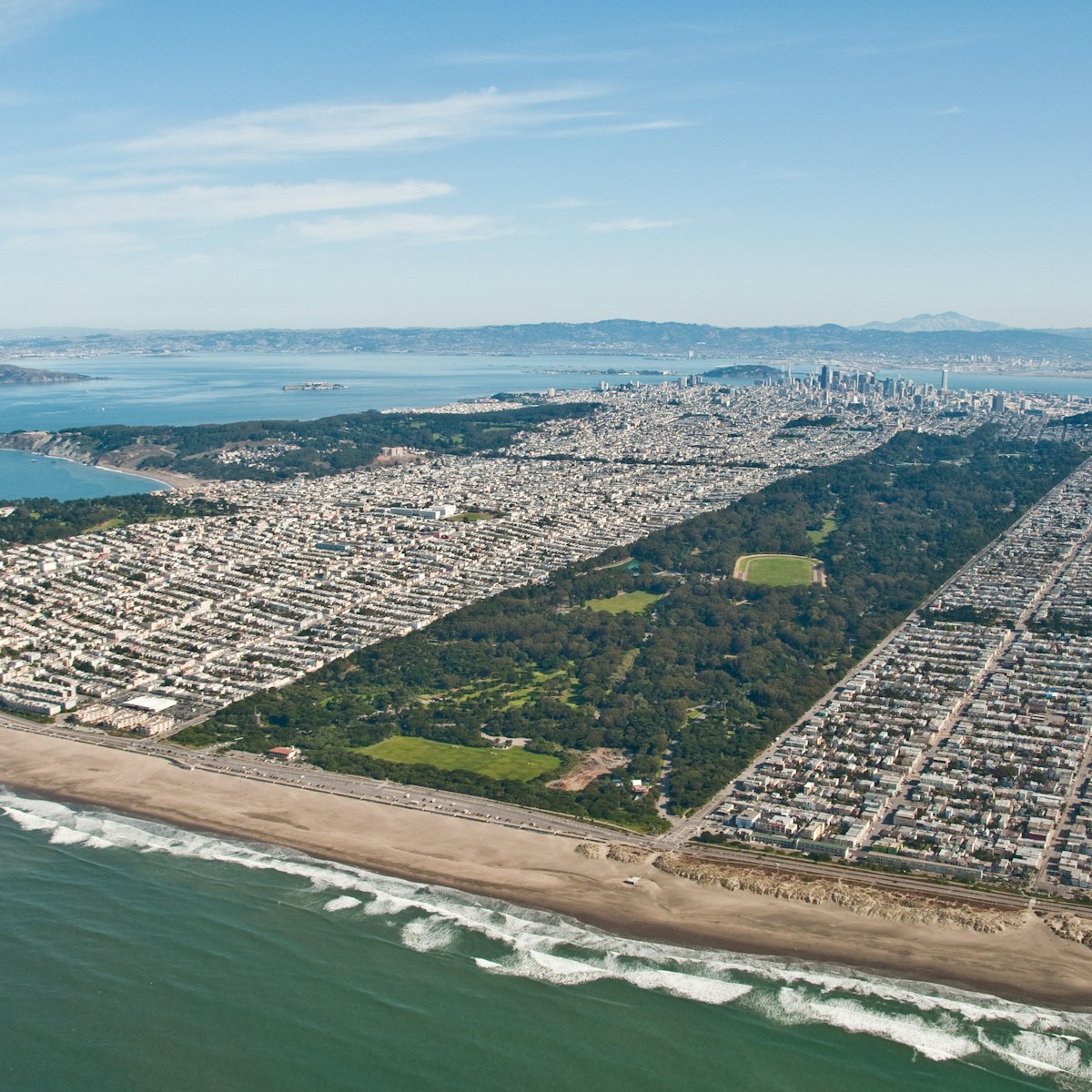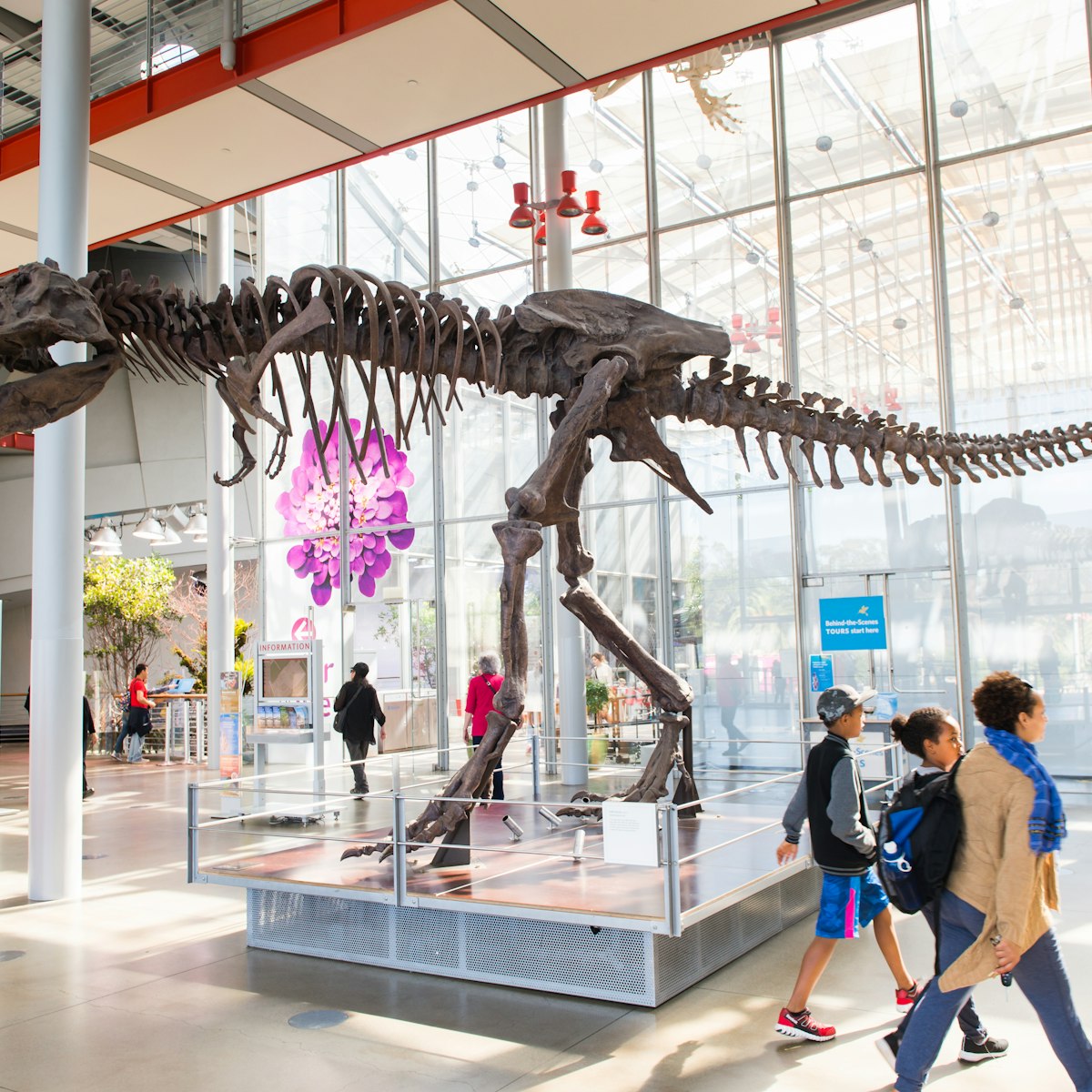
This classic research institute and museum has been teaching San Franciscans about natural history since 1853. Right in the middle of Golden Gate Park, architect Renzo Piano's 2008 landmark LEED-certified green building houses over 45,000 animals in a four-story rainforest, split-level aquarium and planetarium, all under a 'living roof' of wildflowers.
Inside, butterflies flit around in the glass Osher Rainforest Dome, penguins waddle in the African Hall within the Kimball Natural History Museum, and Claude the albino alligator stalks the mezzanine swamp in the Steinhart Aquarium. Kids also dig the aquarium's basement, where they can duck inside a glass bubble to enter an Eel Garden, find Dorys in the tropical fish tanks and pet starfish in the hands-on Discovery Tidepool.
Don't miss the fun ongoing exhibits like Giants of Land and Sea, where you can brave an earthquake simulation, virtually climb a redwood and get lost in a fog room. Another hit is the California Coast exhibit, where you can watch divers swim through a replica of the Gulf of the Farallones National Marine Sanctuary right in San Francisco's own backyard.

Claude, a rare albino alligator, sits in the Swamp area of the California Academy of Sciences © Photo b Bloomberg via Getty Images
After hours at California Academy of Sciences
After the penguins nod off to sleep, the wild rumpus starts with different after-hours programs for all ages.
Every Thursday night from 6-10 pm, adults get a crack at the museum kid-free with a special 21+ NightLife event that features rainforest-themed cocktails and live DJs to encourage strange mating rituals. Tickets cost $15-$17.50 and should be purchased at least a day in advance.
For the littles, museum Sleepovers are a chance to combine penguins, pajamas, and a private planetarium show. The events last from 6PM until 8AM and include an overnight stay in one of the exhibit areas, a late night snack, an early morning breakfast, and admission to the Academy the following day. Sleepovers are open to children ages 5-17, who must be accompanied by an adult chaperone.

The California Academy of Sciences is one of the oldest museums in the state ©Anton_Ivanov/Shutterstock
How to visit the California Academy of Sciences
The California Academy of Science is open to the public from 9:30AM until 5PM Monday through Saturday, and 11AM to 5PM on Sunday.
Members get a little extra time to explore as a perk, from 8:30-9:30AM on Tuesdays and 10-11AM on Sundays.
Daytime admissions prices include access to the entire Academy, and vary by date, entry time, and age group, as the museum has implemented timed, ticketed entry since the start of the COVID-19 pandemic. That also means you should make a reservation in advance. Check ahead of time to see if any exhibits will be temporarily closed as phased reopening unfurls.

Kids looking at Macaw in the Rainforests of the World dome at California Academy of Sciences. ©Sabrina Dalbesio/Lonely PlanetBecause the Academy is within Golden Gate Park, it's pretty easy to access via public transit. The 44 O'Shaughnessy MUNI is the most convenient – it stops right in front of the museum. The 5 Fulton, 7 Haight, and North Judah Metro are other options, as well as Golden Gate Park's own shuttle system.
Bike parking is available outside the museum, and the Music Concourse Garage is available for car parking, though it can fill up at peak times. The Garage costs $5.25 per hour on weekdays and $6.25 per hour on weekends or after 5:30PM. Metered street parking is also available.

California Academy of Sciences. ©Sabrina Dalbesio/Lonely Planet
Accessibility at the Academy
Most of the Academy is accessible for visitors with mobility impairments, though you will need to proceed to the third floor accessible entrance for the planetarium, and request an accessible seat in the Forum Theater.
Visitors with visual impairments can request readers and specially trained tour guides at least two weeks in advance, or you may bring your own interpreter without paying an additional admission fee. Deaf and hard of hearing visitors can also request sign-language interpreters at least two weeks in advance, including for planetarium and Forum Theater presentations.
You may also request a first-come, first-served Sensory Kit from the coat check clerk, which includes accessories designed to make the exhibits more accessible for visitors with extra sensory sensitivities. Like the SFMOMA, the Academy also offers a Sensory Guide which helps clarify which parts of the museum may be more or less stimulating for neurodivergent visitors.
 Publish for free
Publish for free

 zzdtravel
zzdtravel





